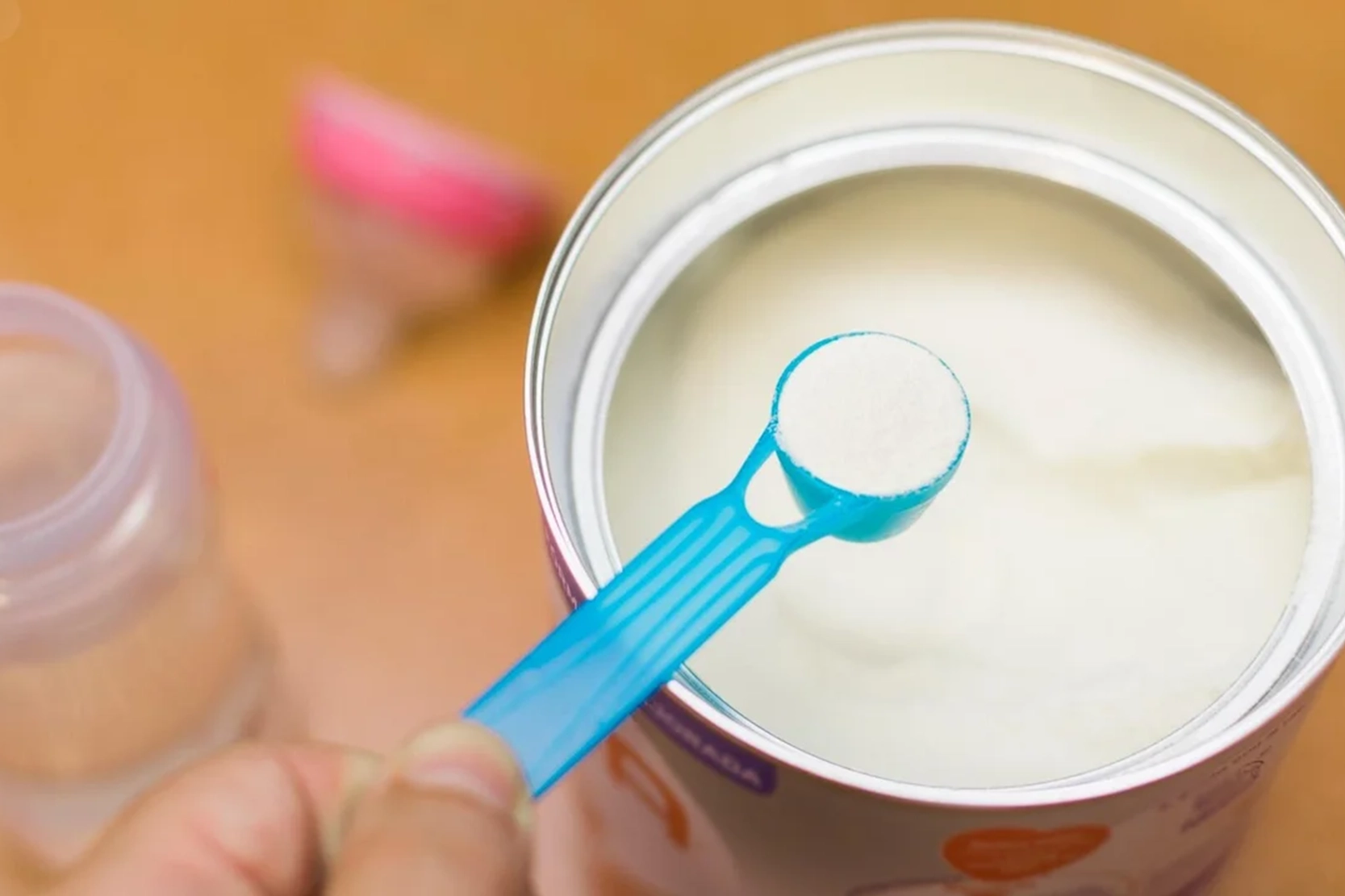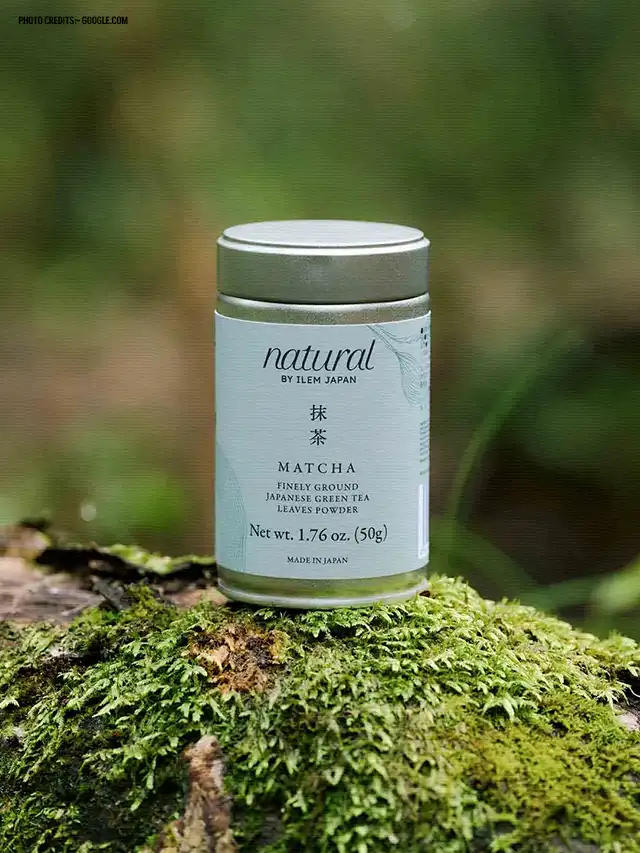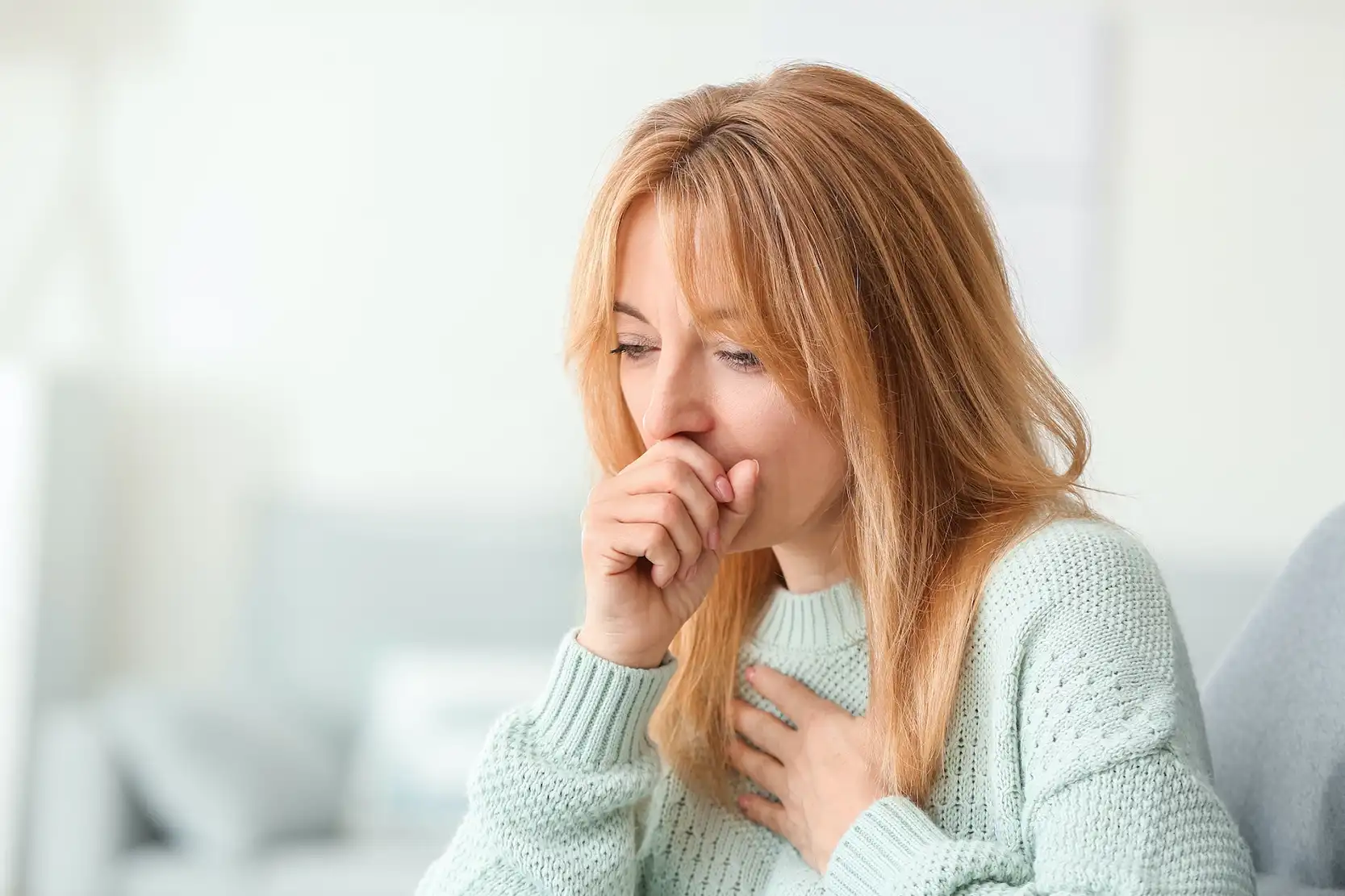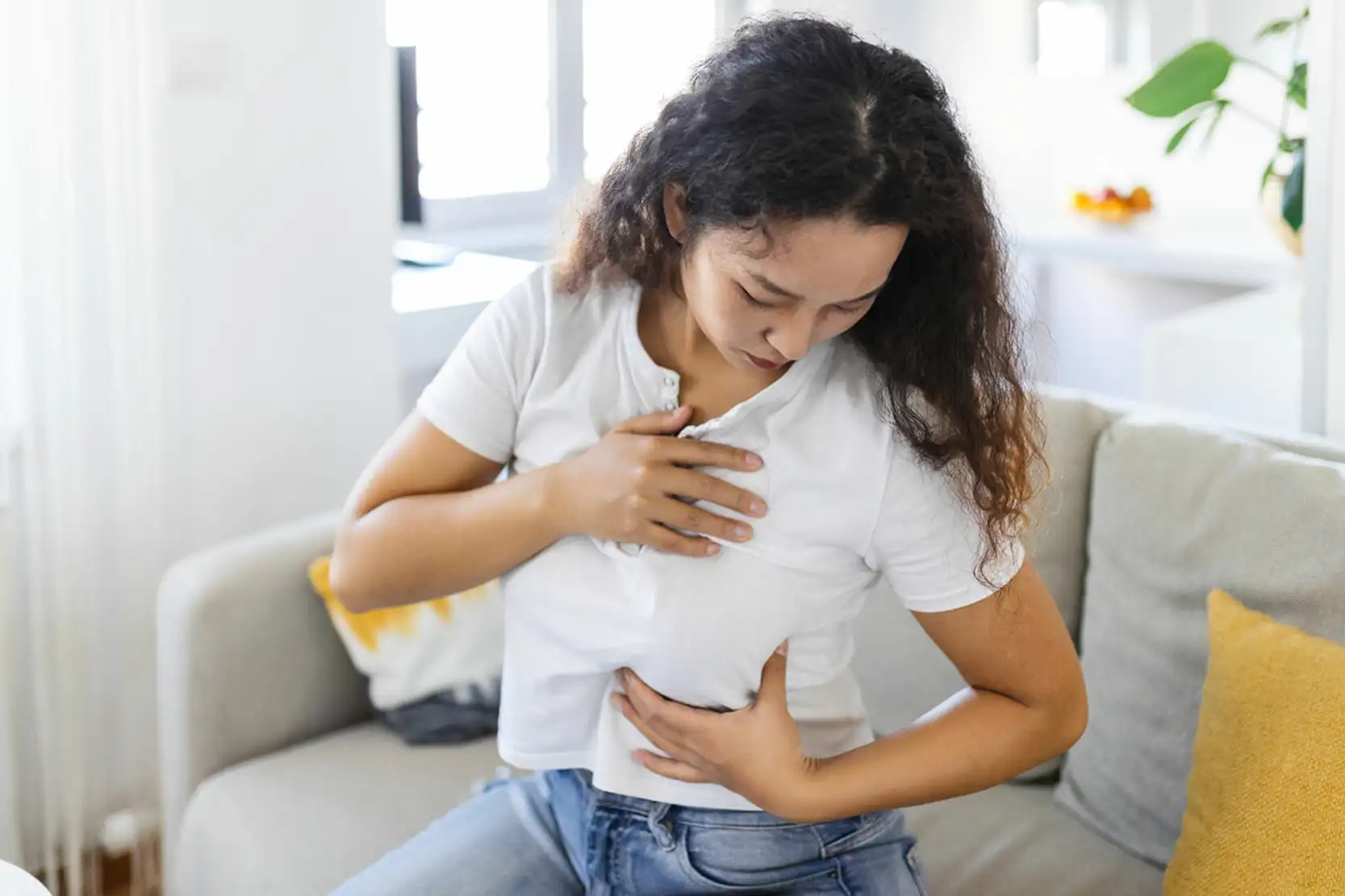
HEALTH BLOG
Does Matcha Have Caffeine? Its Health Benefits and Safe Use
-
Rahul Priydarss
Discover the intriguing world of matcha and explore whether it contains caffeine. In this comprehensive guide, we delve into the origins, preparation, and health implications of matcha, a unique powdered green tea from Japan. Learn about the different types of matcha, from ceremonial to culinary grades, and find out how much matcha you can safely consume. Uncover the myths and misconceptions surrounding matcha and its caffeine content. Whether you’re a matcha enthusiast or new to this green tea, this article answers key questions like “Does matcha have caffeine?” and offers insights into where to buy matcha and its potential health benefits.
Introduction of Does Matcha Have Caffeine:
Matcha, a finely ground powdered green tea from Japan, is renowned for its vibrant color and rich flavor. As an integral part of Japanese tea ceremonies and modern wellness trends, matcha has garnered attention for its unique preparation and health benefits. One common question that arises is whether matcha contains caffeine. Unlike traditional green tea, where leaves are steeped and discarded, matcha involves consuming the entire powdered leaf. This method significantly impacts its caffeine content, offering a different experience compared to other types of tea. In this article, we will explore the caffeine levels in matcha, how they compare to other beverages, and what this means for your health and energy levels.
What is Matcha?:
Matcha is a type of powdered green tea originating from Japan. Unlike traditional green tea, where the leaves are steeped in hot water, matcha involves grinding young tea leaves into a fine powder. This powder is then whisked into hot water, creating a vibrant green beverage. The cultivation of matcha is unique: the tea plants are grown in the shade for several weeks before harvest, which enhances the chlorophyll content and gives matcha its distinctive color and rich, umami flavor. The shading process also increases the levels of L-theanine, an amino acid known for its calming effects, which contributes to the tea’s smooth taste and helps balance the caffeine content.

Table of Contents
Origin and History of Matcha:
Matcha has a rich history that traces back over a thousand years to ancient China, where the practice of consuming powdered tea began. The process of making powdered tea was introduced during the Tang Dynasty (618-907 AD). Tea leaves were steamed, dried, and ground into a powder, which was then whisked into hot water. This method of preparation was popular among Chinese Zen Buddhists for its calming effects and role in meditation.
The art of making powdered tea was brought to Japan in the late 12th century by Eisai, a Japanese Zen monk who had studied in China. Upon returning to Japan, Eisai introduced the practice to Japanese monks and samurai. The Japanese adapted the technique, and by the 15th century, it became an integral part of Japanese tea ceremonies, particularly the Chanoyu, which emphasizes the aesthetics and spirituality of tea preparation and consumption.
In Japan, the cultivation of matcha evolved significantly. Tea plants were grown under shade to increase their chlorophyll content, which gave matcha its vibrant green color and distinct flavor. This practice refined the quality of matcha and made it a symbol of Japanese culture.
Throughout the centuries, matcha remained a staple in Japanese tea culture, cherished not only for its taste but also for its cultural significance. It became popular outside Japan in the 21st century as global interest in health and wellness surged, with matcha being recognized for its antioxidant properties and unique flavor profile. Today, matcha is enjoyed worldwide in various forms, from traditional tea to modern culinary creations.
Ingredients of Matcha:
Matcha is composed of several key ingredients that contribute to its distinctive flavor and health benefits.
Green Tea Leaves: The primary ingredient in matcha is finely ground green tea leaves. These leaves are grown in the shade to enhance their chlorophyll content and increase the levels of amino acids, particularly L-theanine.
Caffeine: Matcha contains caffeine, which is derived from the tea leaves. The caffeine content in matcha is higher than in regular green tea because you consume the entire leaf in powdered form. On average, an 8-ounce serving contains about 60-70 milligrams of caffeine.
L-Theanine: This amino acid is abundant in matcha and contributes to its calming effects. L-theanine helps balance the stimulating effects of caffeine, promoting a sense of calm alertness and reducing jitteriness.
Catechins: Matcha is rich in catechins, a type of antioxidant. The most notable catechin in matcha is epigallocatechin gallate (EGCG), which has been linked to various health benefits, including reducing oxidative stress and inflammation.
Chlorophyll: The shading process during matcha cultivation increases chlorophyll levels, giving matcha its vibrant green color. Chlorophyll is believed to support detoxification and overall wellness.
Vitamins and Minerals: Matcha contains essential vitamins such as vitamin A, C, and E, as well as minerals like potassium, calcium, and iron. These nutrients contribute to matcha’s health benefits, including immune support and skin health.
Fiber: The whole tea leaves in matcha provide dietary fiber, which aids in digestion and promotes gut health.
Theanine: Apart from L-theanine, matcha contains other forms of theanine, which further enhance its calming effects and contribute to a balanced energy boost.
Here is a table summarizing the key ingredients of matcha and their typical quantities:
| Ingredient | Quantity (per 1 gram of matcha powder) |
|---|---|
| Green Tea Leaves | 1 gram (entire leaf, ground to powder) |
| Caffeine | 60-70 milligrams |
| L-Theanine | 20-30 milligrams |
| Catechins | 20-30 milligrams of EGCG |
| Chlorophyll | 10-15 milligrams |
| Vitamins | Vitamin A: ~100 IU, Vitamin C: ~10 mg, Vitamin E: ~1 mg |
| Minerals | Potassium: ~30 mg, Calcium: ~10 mg, Iron: ~1 mg |
| Fiber | 0.5-1 gram |
These values are approximate and can vary based on the quality and grade of matcha.

Does Matcha Have Caffeine:
Yes, matcha contains caffeine. Unlike traditional green tea, where the leaves are steeped and then discarded, matcha involves consuming the entire powdered leaf, which provides a higher concentration of caffeine. On average, an 8-ounce serving of matcha contains about 60-70 milligrams of caffeine, though this can vary depending on the amount of matcha powder used and the specific brand.
The caffeine in matcha provides a more sustained and gentle energy boost compared to coffee. This is due to the presence of L-theanine, an amino acid found in matcha that moderates the effects of caffeine, promoting alertness and focus while reducing the likelihood of the jitteriness or crash that can accompany coffee consumption. The combination of caffeine and L-theanine in matcha results in a balanced and steady increase in energy and concentration.
How Matcha Affects the Body:
Matcha affects the body in several positive ways, owing to its unique combination of nutrients and compounds. Here’s how matcha impacts different aspects of health.
1. Energy and Mental Clarity: Matcha contains caffeine, which enhances alertness and energy levels. However, unlike coffee, matcha also has L-theanine, an amino acid that promotes relaxation and mental clarity. The combination results in a steady release of energy and improved concentration without the jitteriness often associated with coffee.
2. Metabolism and Weight Management: The caffeine in matcha can increase metabolism and boost fat oxidation. This thermogenic effect helps in calorie burning and can support weight management efforts, although the impact is typically mild.
3. Antioxidant Protection: Matcha is rich in catechins, particularly epigallocatechin gallate (EGCG), a powerful antioxidant. These compounds help neutralize free radicals in the body, reducing oxidative stress and potentially lowering the risk of chronic diseases like heart disease and cancer.
4. Heart Health: The antioxidants in matcha can contribute to improved heart health by lowering LDL cholesterol levels and reducing blood pressure. Regular consumption of matcha may help in maintaining cardiovascular health.
5. Immune System Support: Matcha provides essential nutrients, including vitamins A, C, and E, which support immune function. These vitamins, combined with the antioxidant properties of matcha, help strengthen the body’s defense mechanisms.
6. Stress Reduction and Mood Improvement: This amino acid in matcha promotes relaxation and can help manage stress. It enhances the production of alpha waves in the brain, contributing to a calm yet alert mental state.
7. Digestive Health: Matcha contains dietary fiber, which aids in digestion and supports a healthy gut. Fiber helps regulate bowel movements and can contribute to overall digestive health.
8. Detoxification: Matcha is high in chlorophyll, which supports detoxification by helping the body eliminate toxins and heavy metals. This can contribute to overall wellness and improved skin health.
Factors Affecting Caffeine Levels in Matcha:
Several factors can influence the caffeine levels in matcha. Here’s a summary of the key factors.
Quality of Matcha: The quality of matcha can significantly affect its caffeine content. Higher-grade matcha, such as ceremonial grade, often contains more caffeine due to the younger, tender leaves used. Lower-grade matcha, typically used for cooking, may have varying caffeine levels.
Growing Conditions: The cultivation environment, including soil quality, weather, and altitude, can impact caffeine content. Matcha grown in shaded conditions tend to have higher caffeine levels because the plant produces more caffeine to protect itself from excessive sunlight.
Processing Methods: The processing techniques, including how the leaves are dried and ground, can affect caffeine levels. The traditional stone-ground method may retain more caffeine compared to more modern processing methods.
Preparation Method: The way matcha is prepared can also influence caffeine levels. Using more matcha powder or a longer whisking time can increase the caffeine concentration in the final drink. Additionally, the water temperature used can affect the extraction of caffeine.
Leaf to Water Ratio: The ratio of matcha powder to water affects the caffeine content. A higher concentration of matcha powder results in a stronger drink with more caffeine.
Comparison of Matcha vs. Other Green Teas:
When comparing matcha to other green teas like Lipton tea and Dogadan tea, several key differences and similarities emerge. Here’s a detailed comparison.
Matcha:
Processing: Matcha is made from young tea leaves that are steamed, dried, and then finely ground into a powder. This method ensures that you consume the entire leaf, providing a concentrated source of nutrients and caffeine.
Caffeine Content: Matcha typically contains higher caffeine levels compared to most green teas, due to the consumption of the whole leaf. A standard serving can have about 60-70 mg of caffeine per 8 oz cup, though this can vary.
Flavor Profile: Matcha has a rich, umami flavor with a smooth, creamy texture. Its taste can be described as grassy or vegetal, with a subtle sweetness.
Health Benefits: It is known for its high antioxidant content, particularly catechins, and provides a steady energy boost due to the combination of caffeine and L-theanine, an amino acid that promotes relaxation.
Lipton Tea:
Processing: Lipton green tea is made from leaves that are usually processed through a standard green tea method, which involves steaming or pan-frying followed by drying. The leaves are then cut or crushed.
Caffeine Content: Lipton green tea generally has lower caffeine content compared to matcha, usually around 30-40 mg per 8 oz cup. This is due to the different processing and the fact that only an infusion of the leaves is consumed.
Flavor Profile: Lipton green tea has a lighter, more delicate flavor compared to matcha. It often has a more subtle, less complex taste.
Health Benefits: While it still offers antioxidants, Lipton green tea may not provide the same concentration of catechins or the calming effect of L-theanine as matcha. It is, however, a good source of general antioxidants and can be part of a healthy diet.
Dogadan Tea:
Processing: Dogadan, a popular Turkish tea brand, offers various green tea options that are typically processed similarly to standard green teas. The leaves are steamed or pan-fried, then dried.
Caffeine Content: Dogadan green tea’s caffeine content is similar to other conventional green teas, usually around 30-40 mg per 8 oz cup. This is less than matcha, as it only involves infusing the leaves rather than consuming them whole.
Flavor Profile: Dogadan green tea tends to have a mild, fresh flavor with slight vegetal notes. The taste is generally light and smooth.
Health Benefits: Like Lipton, Dogadan green tea provides antioxidants, though the concentration might be lower than in matcha. It supports general well-being and can be part of a balanced diet.
Health Implications of Matcha’s Caffeine:
Matcha’s caffeine content offers several health implications, both positive and negative, depending on individual consumption and sensitivity. Here’s a detailed look.
Positive Health Implications:
Enhanced Mental Alertness: Matcha provides a steady release of caffeine that can improve concentration, focus, and mental clarity. The combination of caffeine and L-theanine, an amino acid found in matcha, helps enhance cognitive function without the jitteriness often associated with coffee.
Increased Energy Levels: The caffeine in matcha can help boost energy and reduce fatigue. Unlike coffee, which can lead to sudden energy spikes and crashes, matcha offers a more gradual energy release.
Metabolism Boost: Caffeine is known to increase metabolic rate, which can aid in weight management by enhancing calorie burning. Matcha, with its higher caffeine content, can have a more pronounced effect on metabolism compared to regular green tea.
Improved Physical Performance: The caffeine in matcha can enhance physical performance by increasing adrenaline levels and improving endurance. This makes it a beneficial drink for athletes or those engaging in physical activities.
Negative Health Implications:
Potential for Overconsumption: High caffeine intake from matcha can lead to negative side effects such as insomnia, increased heart rate, anxiety, and digestive issues. It’s important to moderate consumption to avoid these effects.
Possible Interference with Nutrient Absorption: Excessive caffeine consumption can interfere with the absorption of certain nutrients, including calcium and iron. For individuals at risk of deficiencies, it’s crucial to balance matcha intake with a nutrient-rich diet.
Gastrointestinal Distress: For some people, the caffeine in matcha may cause gastrointestinal discomfort, including nausea or upset stomach, especially if consumed on an empty stomach.
Impact on Sleep: Consuming matcha late in the day can disrupt sleep patterns due to its caffeine content. It’s advisable to avoid drinking matcha in the late afternoon or evening to prevent potential sleep disturbances.
How Much Matcha Can You Safely Consume?:
The safe amount of matcha consumption can vary based on individual health conditions, caffeine sensitivity, and lifestyle. However, general guidelines suggest that moderate consumption is typically safe for most people. Here’s a detailed look at how much matcha you can safely consume.
General Guidelines:
Standard Recommendation: For most people, consuming up to 1-2 teaspoons (about 2-4 grams) of matcha powder per day is considered safe. This generally equates to 1-2 cups of matcha tea daily.
Caffeine Content: Each serving of matcha (approximately 1 gram of powder) contains about 60-70 mg of caffeine. The total daily intake of caffeine should ideally not exceed 400 mg to avoid potential side effects. Therefore, consuming up to 6-7 grams of matcha per day (equivalent to 3-4 cups) is typically within safe limits for most people.
Health Conditions: Individuals with specific health conditions, such as heart issues, anxiety disorders, or gastrointestinal problems, should consult with a healthcare provider to determine an appropriate amount of matcha. They may need to limit their intake further based on their health status.
Pregnancy and Breastfeeding: Pregnant and breastfeeding women are often advised to limit their caffeine intake to about 200-300 mg per day. This means consuming no more than 2-3 cups of matcha per day is usually safe for them, but it’s best to consult a healthcare provider for personalized advice.
Children and Adolescents: Due to their lower body weight and sensitivity to caffeine, children and adolescents should consume less caffeine. Matcha should be consumed in moderation, if at all, and it’s advisable to keep their intake below the general adult recommendations.
Signs of Overconsumption:
Insomnia: Difficulty falling or staying asleep, especially if matcha is consumed late in the day.
Jitteriness or Anxiety: Feeling nervous or overly anxious, which can result from excessive caffeine intake.
Digestive Issues: Upset stomach, nausea, or diarrhea may occur if too much matcha is consumed, particularly on an empty stomach.
Rapid Heart Rate: Increased heart rate or palpitations can be a sign of excessive caffeine intake.
Tips for Safe Consumption:
Start Small: If you’re new to matcha, begin with a smaller amount (about 1/2 teaspoon) and gradually increase based on how your body responds.
Monitor Caffeine Intake: Be mindful of other sources of caffeine in your diet, such as coffee, tea, and chocolate, to avoid exceeding the recommended daily limit.
Consult a Healthcare Provider: If you have health concerns or are on medication, seek personalized advice on matcha consumption.
Varieties of Matcha:
Ceremonial Grade: Ceremonial grade matcha is the highest quality matcha, primarily used in traditional Japanese tea ceremonies. It is made from the youngest and most tender leaves of the tea plant, resulting in a vibrant green color and a smooth, delicate flavor. This type of matcha is characterized by its sweet, creamy, and vegetal taste with a smooth texture. It is best enjoyed on its own, whisked with hot water, and is not typically used in cooking or baking due to its delicate flavor.
Premium Grade: Premium grade matcha is slightly lower in quality than ceremonial grade but still high quality. It is made from young leaves, though it may include slightly older leaves than ceremonial grade. This variety offers a rich and smooth flavor with a well-balanced taste. It is suitable for everyday drinking and can also be used in recipes where a high-quality matcha flavor is desired.
Culinary Grade: Culinary-grade matcha is designed for use in cooking and baking. It is made from more mature leaves, which can result in a stronger, more robust flavor and a slightly duller color compared to ceremonial and premium grades. Culinary-grade matcha has a more bitter taste, which works well in recipes where it is combined with other ingredients. It is ideal for adding to smoothies, lattes, baked goods, and other culinary creations.
Ingredient Grade: Ingredient grade matcha, often a subcategory of culinary grade, is used in processed foods and beverages. It is typically less expensive and may have a coarser texture. This matcha is strong and sometimes more bitter, tailored to recipes where matcha is not the primary flavor. It is commonly used in commercial food products and drinks.
Cooking Grade: Cooking grade matcha is sometimes used interchangeably with culinary grade and is specifically designed for recipes. It has a more intense flavor and can include less tender leaves. This type of matcha is robust, with a more noticeable bitterness. It is perfect for incorporating into dishes such as matcha-infused sauces, dressings, and desserts.
Organic Matcha: Organic matcha is grown without synthetic pesticides or fertilizers. It can be available in various grades, including ceremonial and culinary. The flavor profile is typically similar to non-organic matcha but may have variations due to organic farming practices. Organic matcha can be used in the same ways as other grades, depending on its specific quality.
Traditional Matcha: Traditional matcha is made using historical preparation methods, which may result in less standardized quality. This type of matcha follows traditional techniques and can vary widely in flavor based on the production methods and specific tea leaves used. It is often enjoyed as a traditional beverage or used in cultural recipes.
Blended Matcha: Blended matcha is a combination of different grades or types of matcha, designed to achieve a specific flavor profile or cost point. The flavor can vary depending on the blend but usually aims to balance taste and cost. Blended matcha is often used in commercial products and can be suitable for various culinary applications.
Myths and Misconceptions for Matcha:
Matcha is often surrounded by myths and misconceptions. Here are some common ones and the facts that debunk them.
Myth 1: Matcha is Just Green Tea Powder
Fact: While matcha is indeed a type of green tea powder, it’s distinct from other green tea powders. Matcha is made from whole tea leaves that are finely ground, meaning you consume the entire leaf, which provides a higher concentration of nutrients, antioxidants, and caffeine compared to regular green tea.
Myth 2: Matcha Contains More Caffeine Than Coffee
Fact: Matcha does contain a significant amount of caffeine, but not necessarily more than coffee. A typical serving of matcha (1 gram of powder) has about 60-70 mg of caffeine, whereas an 8 oz cup of coffee usually contains 80-100 mg of caffeine. However, matcha provides a more sustained release of caffeine due to the presence of L-theanine.
Myth 3: Matcha Causes Jitters Like Coffee
Fact: Unlike coffee, matcha contains L-theanine, an amino acid that promotes relaxation and counteracts the jittery effects of caffeine. This combination leads to a more balanced and sustained energy boost without the typical anxiety or rapid heartbeat associated with coffee.
Myth 4: All Matcha Is the Same
Fact: Matcha comes in different grades, with varying quality and flavor profiles. Ceremonial grade matcha is the highest quality, used in traditional tea ceremonies and known for its delicate flavor. Culinary-grade matcha is used for cooking and baking and may have a more robust flavor. The quality of matcha affects its taste, color, and nutritional content.
Myth 5: Matcha Is Bad for Your Health
Fact: Matcha is generally considered healthy and offers numerous benefits, including high levels of antioxidants, vitamins, and minerals. It can support metabolism, improve mental clarity, and provide a steady energy boost. However, excessive consumption can lead to side effects due to its caffeine content, so moderation is key.
Where To Buy Matcha:
Specialty Tea Shops: Specialty tea shops often carry a wide range of matcha grades and varieties. These stores are ideal for finding high-quality ceremonial and premium grades. Staff at specialty tea shops can provide recommendations based on your preferences and offer advice on preparation methods.
Health Food Stores: Health food stores frequently stock matcha due to its popularity as a health supplement. You can find various grades of matcha here, including culinary and organic options. These stores may also carry matcha-based products like lattes and energy bars.
Online Retailers: Online retailers such as Amazon, Etsy, and specialized e-commerce sites offer a vast selection of matcha products. Shopping online provides access to numerous brands and grades, often with customer reviews and detailed product descriptions to help guide your choice. Look for reputable sellers and check for product certifications or reviews to ensure quality.
FAQs about Does Matcha Have Caffeine?:
A1: No, matcha typically has less caffeine than coffee. A serving of matcha contains around 70 milligrams of caffeine, while a cup of coffee can contain between 95 and 200 milligrams.
A2: Yes, matcha provides a steady energy boost and enhanced focus due to its caffeine and L-theanine content.
A3: Yes, consuming 1-2 servings of matcha per day is generally safe and beneficial for most people.
A4: Yes, matcha is rich in antioxidants, which can help protect against oxidative stress and support overall health.
A5: To reduce the caffeine impact, you can use less matcha powder or drink matcha in combination with other non-caffeinated beverages.

-Please remember, to always consult with healthcare professionals or Doctors for personalised advice related to medical conditions.
Conclusion:
In summary, matcha is a distinctive green tea known for its high caffeine content. The question “Does matcha have caffeine?” is answered with a yes, as it contains about 60-70 milligrams per serving. Unlike coffee, matcha’s caffeine effects are balanced by L-theanine, promoting a steady energy boost and enhanced focus without the jitters. Understanding the factors affecting caffeine levels and adhering to safe consumption guidelines can help you enjoy matcha’s benefits. Its rich flavor and health benefits make it a valuable addition to your diet, whether you prefer traditional tea or innovative recipes.




